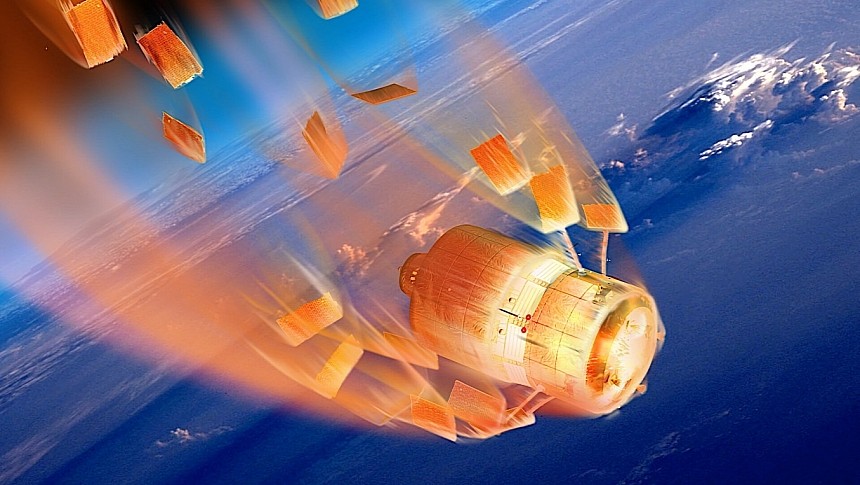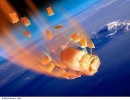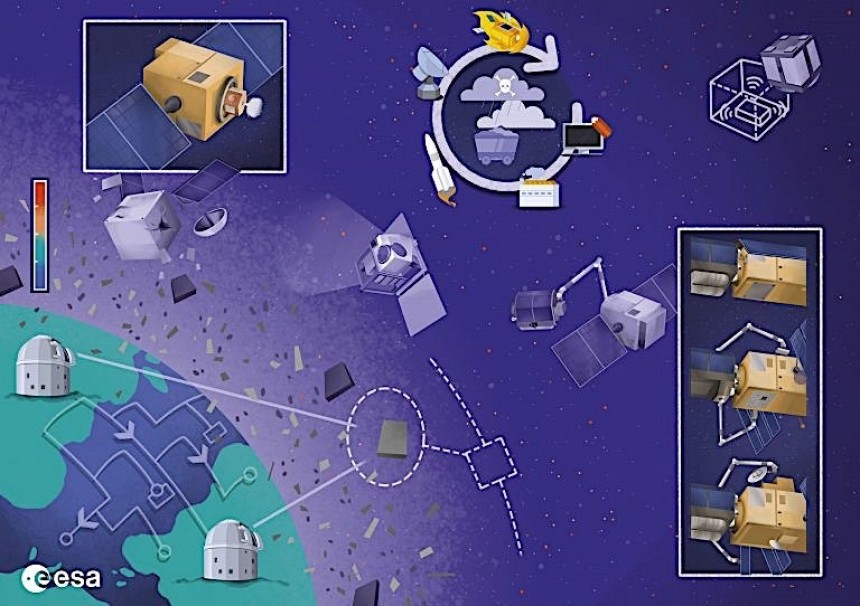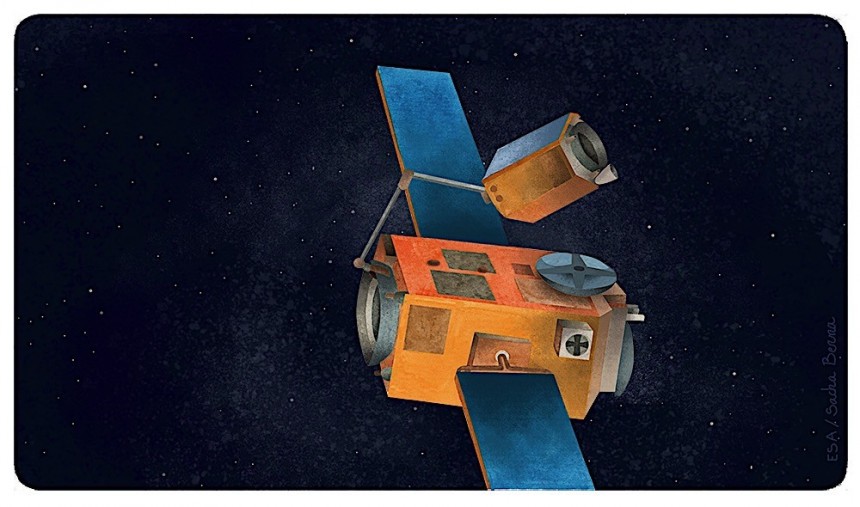In about six decades or so of space exploration humanity has really made a mess of the space surrounding our planet. That's because most of the objects we've sent to orbit for various reasons are still there, even if they are no longer in use, and their missions have long been forgotten.
Not all space missions are public knowledge, so it's technically impossible for anyone to say with certainty how many satellites and other kinds of spacecraft are currently in orbit. Humanity's best estimate sits at around 8,900. And of that just about half of them are still active.
Unlike when dealing with spacecraft and space stations, when our civilization has an interest in either de-orbiting or moving them to a graveyard orbit, no one seems to really care what happens with dead satellites. So most of the inactive ones are now floating aimlessly in space, going round and round our world on trajectories that become increasingly difficult to keep track of.
Several organizations, companies, and space agencies are beginning to take note of this reality, especially given how the number of space missions has been growing rapidly over the past few years. The coming decade will probably continue to move down the same path, meaning it's probably only a matter of time before some dead satellite gets in the way of an important space mission.
So, aside from taking note, some of these groups are actively working on finding ways to clean up Earth's orbits. For the European space agency, that effort is called the Clean Space Initiative.
The project was born back in 2012 and plans, among other things, to come up with ways to "remove dead satellites from highly trafficked orbits." So, not exactly all of them, but a good start nonetheless.
Before getting to it, though, ESA and its partners, which include the Swiss Astronomical Institute of the University of Bern, need to understand why and how dead satellites are always in a tumbling motion. That's because without this understanding there is no way anyone could grab such a space object and put it away somewhere.
That's right, without functioning systems to keep them oriented a certain way, satellites enter a tumbling motion. This is because of a variety of reasons, including altitude, the way they are made, and a lot of uncontrollable factors.
For instance, objects in lower orbits get messed up by the Earth's gravitational pull, eddy currents, and drag from the upper layers of the planet's atmosphere. Both satellites spinning in low orbit and all the others get influenced by outgassing and fuel leaks, debris impact, and even something known as solar radiation pressure – that's basically the power of the sun's light pushing against an object, especially when said object still has the solar panels attached.
So, the reasons why dead satellites begin to tumble are pretty much known, but no one really knows how they are doing that, which direction they go, how fast, or if they keep a steady tumbling pace or not.
Knowing how a piece of space debris tumbles and being able to predict its motions are essential aspects of future removal missions. Only by knowing such facts will the grabbing of such an object work as intended.
As you can imagine, determining the tumbling motions of a satellite is a gargantuan task. It took ESA and its Swiss partner, for instance, two full years to look at just 20 such objects and try to make sense of them.
The project involved measuring these movements by means of optical gear, lasers, and even radar observations. But it was worth it, as the Europeans announced this week they've made a computer model dedicated to the task.
Called In-Orbit Tumbling Analysis, the solution could help us make better and faster sense of tumbling motions, and all with just a few passes of some means of observation over the target.
It's not exactly clear at this time how advanced the computer model is or when it will be ready for deployment. A paper on the subject was however published by ESA at the end of last week.
Although it makes sense to understand how a space object is moving before grabbing and removing it, such extensive analysis may not be needed at all if another European company has its way.
Just before ESA published its "Tumbling Motion Assessment for Space Debris Objects" paper, aerospace giant Airbus let the world in on something it proudly calls the Detumbler.
The device is a tiny piece of magnetic hardware weighing just 100 grams. When attached to a dead satellite, it can prevent its tumbling motion by using a central rotor wheel and two magnets to generate corrective eddy currents.
It's a solution that could literally eliminate tumbling from the movement of a space object around our planet. The only problem is the Detumbler will be useless for satellites that are already in orbit, because attaching it to them is an impossible task. And even if it weren't, it still would have required tumbling motion assessment in the first place for the device to be placed properly.
The Detumbler is however already in space, having departed our planet on November 11. Airbus will put it to the test in 2024 and if it works it could completely eliminate the tumbling problem in future generations of satellites.
Unlike when dealing with spacecraft and space stations, when our civilization has an interest in either de-orbiting or moving them to a graveyard orbit, no one seems to really care what happens with dead satellites. So most of the inactive ones are now floating aimlessly in space, going round and round our world on trajectories that become increasingly difficult to keep track of.
Several organizations, companies, and space agencies are beginning to take note of this reality, especially given how the number of space missions has been growing rapidly over the past few years. The coming decade will probably continue to move down the same path, meaning it's probably only a matter of time before some dead satellite gets in the way of an important space mission.
So, aside from taking note, some of these groups are actively working on finding ways to clean up Earth's orbits. For the European space agency, that effort is called the Clean Space Initiative.
The project was born back in 2012 and plans, among other things, to come up with ways to "remove dead satellites from highly trafficked orbits." So, not exactly all of them, but a good start nonetheless.
Before getting to it, though, ESA and its partners, which include the Swiss Astronomical Institute of the University of Bern, need to understand why and how dead satellites are always in a tumbling motion. That's because without this understanding there is no way anyone could grab such a space object and put it away somewhere.
For instance, objects in lower orbits get messed up by the Earth's gravitational pull, eddy currents, and drag from the upper layers of the planet's atmosphere. Both satellites spinning in low orbit and all the others get influenced by outgassing and fuel leaks, debris impact, and even something known as solar radiation pressure – that's basically the power of the sun's light pushing against an object, especially when said object still has the solar panels attached.
So, the reasons why dead satellites begin to tumble are pretty much known, but no one really knows how they are doing that, which direction they go, how fast, or if they keep a steady tumbling pace or not.
Knowing how a piece of space debris tumbles and being able to predict its motions are essential aspects of future removal missions. Only by knowing such facts will the grabbing of such an object work as intended.
As you can imagine, determining the tumbling motions of a satellite is a gargantuan task. It took ESA and its Swiss partner, for instance, two full years to look at just 20 such objects and try to make sense of them.
The project involved measuring these movements by means of optical gear, lasers, and even radar observations. But it was worth it, as the Europeans announced this week they've made a computer model dedicated to the task.
It's not exactly clear at this time how advanced the computer model is or when it will be ready for deployment. A paper on the subject was however published by ESA at the end of last week.
Although it makes sense to understand how a space object is moving before grabbing and removing it, such extensive analysis may not be needed at all if another European company has its way.
Just before ESA published its "Tumbling Motion Assessment for Space Debris Objects" paper, aerospace giant Airbus let the world in on something it proudly calls the Detumbler.
The device is a tiny piece of magnetic hardware weighing just 100 grams. When attached to a dead satellite, it can prevent its tumbling motion by using a central rotor wheel and two magnets to generate corrective eddy currents.
It's a solution that could literally eliminate tumbling from the movement of a space object around our planet. The only problem is the Detumbler will be useless for satellites that are already in orbit, because attaching it to them is an impossible task. And even if it weren't, it still would have required tumbling motion assessment in the first place for the device to be placed properly.
The Detumbler is however already in space, having departed our planet on November 11. Airbus will put it to the test in 2024 and if it works it could completely eliminate the tumbling problem in future generations of satellites.










